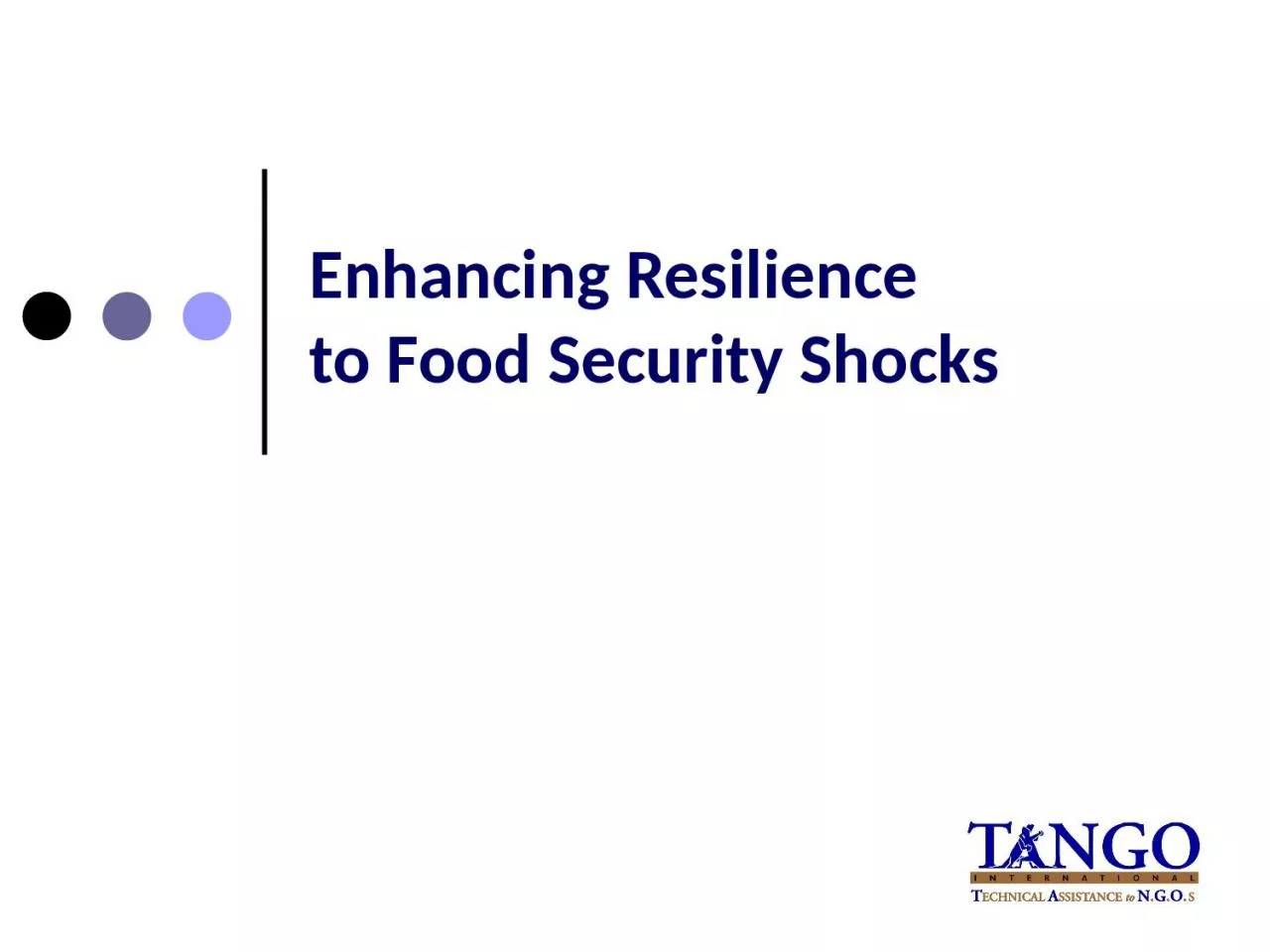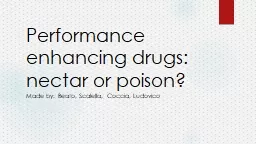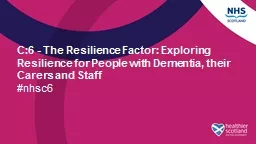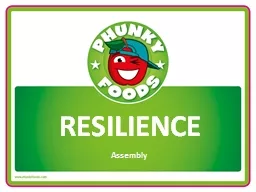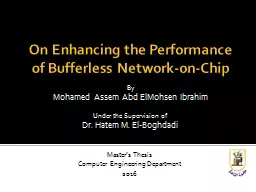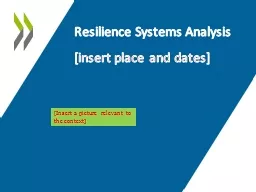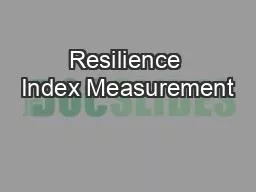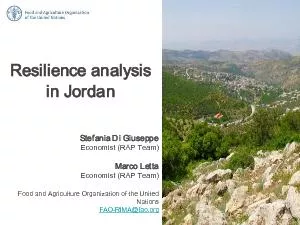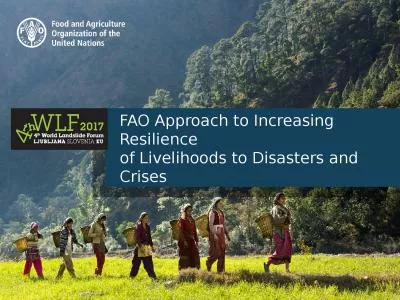PPT-Enhancing Resilience to Food Security Shocks
Author : rivernescafe | Published Date : 2020-08-29
the ability of individuals households communities or systems to bounce back or recover following a shock or stress and build positively on this experience Frankenberger
Presentation Embed Code
Download Presentation
Download Presentation The PPT/PDF document "Enhancing Resilience to Food Security S..." is the property of its rightful owner. Permission is granted to download and print the materials on this website for personal, non-commercial use only, and to display it on your personal computer provided you do not modify the materials and that you retain all copyright notices contained in the materials. By downloading content from our website, you accept the terms of this agreement.
Enhancing Resilience to Food Security Shocks: Transcript
Download Rules Of Document
"Enhancing Resilience to Food Security Shocks"The content belongs to its owner. You may download and print it for personal use, without modification, and keep all copyright notices. By downloading, you agree to these terms.
Related Documents

